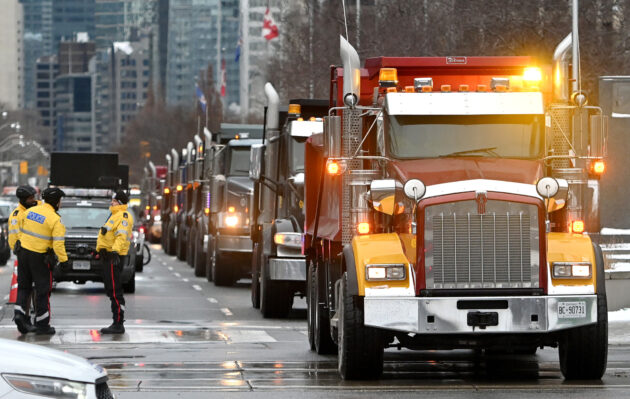It’s time for dump truck owners to get SPIF-y
There has been plenty of noise on Toronto-area roads in recent weeks, and it’s not limited to isolated cases of road rage.
The Ontario Dump Truck Association (ODTA) has taken to the streets to protest the latest updates to the province’s vehicle weights and dimensions that took hold on Jan. 1. Specifically, its members are balking at changes that see the phase out of rigid lift axles in the favor of self-steering axles, and the need for axles to automatically equalize loads.
But the protesters lost me in their attempts to argue the Safe, Productive, Infrastructure-Friendly (SPIF) requirements dropped out of thin air, without consultations.

These regulations were rolled out in four phases between 2000 and 2011, and there was nearly a decade of grandfathering periods that followed. There have been notices posted at scales, and multiple education sessions.
Anyone in the sector who was unaware of the changes just wasn’t paying attention.
Nothing is accomplished by feigning surprise at the 11th hour before such rules take hold. And regulators will always be quick to turn deaf ears to unreasonable demands, such as ODTA’s position that triaxle dump trucks should operate at maximum weights for their entire lifespans. (They do know how long dump trucks often stay in service, don’t they?)
To compound matters, further delays would penalize those businesses that have already invested $25,000 or more in equipment upgrades, and leave those with non-compliant equipment to undercut rates.
These mandated equipment upgrades help to preserve some of the most productive weights and dimensions in North America. And they help to protect the very roads and bridges that dump truck operators help to build.
It’s a matter of physics. When the lift axle is raised on a fully loaded truck – whether it’s to extend tire life or increase traction – the remaining axles are overloaded, causing damage to equipment and asphalt alike. And if you want to question the damage this can do to a road, look no further than the rutted lanes around some quarries.
A study released in 2005 found that non-steering lift axles were blamed for about $300 million in annual damage to Ontario roads and bridges. This affects everyone.
There are admittedly challenges to address as new equipment of any sort comes online. Many job sites won’t allow drivers out of cabs to access an exterior switch to lift self-steering axles, for example. The constant lifting and dropping of an axle can also strain an air system as equipment rolls back and forth.
Those who want some level of in-cab control on a job site can have switches installed in the dash, but there are limits to how long the axles can remain raised. The overrides for the self-steering axle or forward-steer auxiliary pusher axle must be limited to times when the truck is running under 60 km/h, and the axles need to deploy as soon as a truck comes to a stop or within three minutes of being activated.
But updates and revisions emerge through actual dialogue. It’s how the steerable lift axles themselves have come to improve as the regulations were gradually rolled out.
It’s the kind of change that comes about when associations are serious about becoming part of a process, rather than looking for ways to appease members.
Have your say
This is a moderated forum. Comments will no longer be published unless they are accompanied by a first and last name and a verifiable email address. (Today's Trucking will not publish or share the email address.) Profane language and content deemed to be libelous, racist, or threatening in nature will not be published under any circumstances.
Hi
After.all these years of trying and speaking to different people at MTO offices etc, their response was always “we do not have direct instructions as of yet for spiff info”
So they cannot say it was 10 years in the making without clear guidance to their own employees !
We are awaiting on our permit for 1 truck. We were pulled over and told to get off the road, except that is not truthfully the law, we can be on the road with less weight. With that said, who is going to hire us with half load capacity when it’s not half load time?
The employee was super rude which is truly not very professional. We have responsible and experienced drivers to be treated by young mto officers who think they know it all I’m that matter.
With that said, those who are protesting are the problem. They have been undercutting us (who have been in this business for 20+ years) they go in to job sites and offer cheap prices. And then complain.
We all have families to feed and trucks to maintain and extremely high insurance costs !! They are the ones at fault for causing the insurance rise in costs over the last 5 years, our insurance has tripled!!
We have well maintained trucks, we take care of our drivers so they are happy in our trucks!
There is so much to discuss this SPIFF is just the “cake mix”
I wish someone would listen to those who have been I’m the business for so long !
i have driven both types and find on a wet road it is harder to make turns with the self-steering axles I find.
Simple put minimum rates of $90 per hour for a tri axles gravel truck. The companies with out a steer axle will have to pay out the 90 per hour rate $5 per hour into a special tax towards road maintenance.